Electric vehicles
Hyundai to develop EREV powertrain for electric pickup, Santa Fe, GV70
Hyundai aims to overcome the EV chasm with increased sales of hybrids and EREVs, particularly in the US market
By Aug 13, 2024 (Gmt+09:00)
4
Min read
Most Read
LG Chem to sell water filter business to Glenwood PE for $692 million


KT&G eyes overseas M&A after rejecting activist fund's offer


Mirae Asset to be named Korea Post’s core real estate fund operator


StockX in merger talks with Naver’s online reseller Kream


Meritz backs half of ex-manager’s $210 mn hedge fund


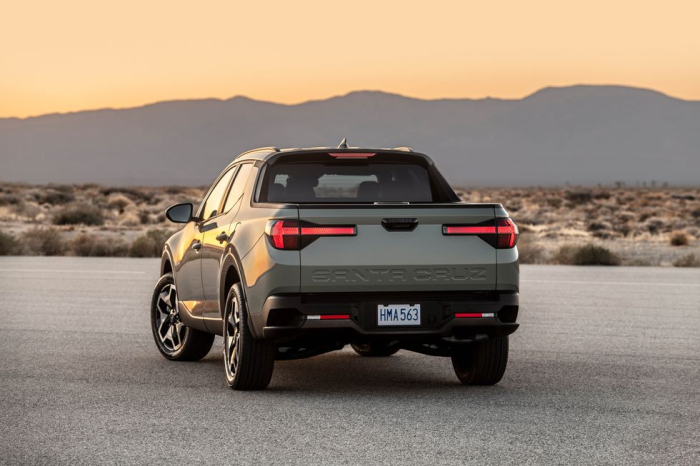
South Korea’s top automaker Hyundai Motor Group is developing a next-generation powertrain, known as a range extender, for pickup trucks and sport utility vehicles amid an industry view that the current electric vehicle sales slowdown or EV chasm could be protracted.
The automotive group, which owns Hyundai Motor Co. and Kia Corp., has begun a project to develop a fuel-based auxiliary power unit that extends the range of a battery electric vehicle (BEV) by running an electric generator that charges the vehicle’s battery, industry sources said on Tuesday.
Range-extender vehicles are also referred to as extended-range electric vehicles (EREVs), range-extended electric vehicles (REEVs) or range-extended battery-electric vehicles (BEVx).
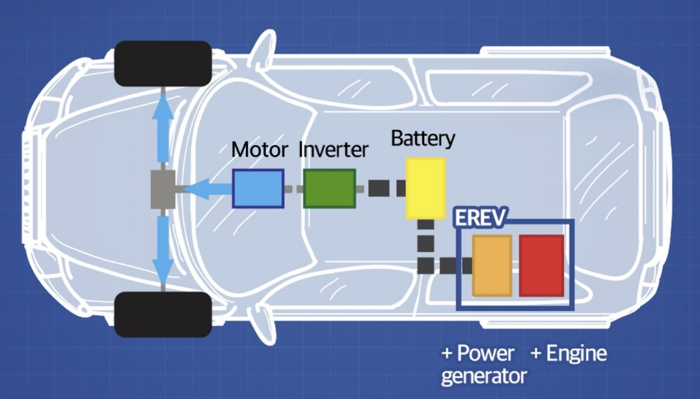
The most commonly used range extenders are internal combustion engines, but fuel cells or other engine types can also be used.
For the project, Hyundai recently set up an “xEV system” development task force at its Namyang R&D Center. Yang Heui-won, president and R&D chief of Hyundai Motor Group, is in charge of the project, according to people familiar with the matter.
EREVs are similar to hybrid cars in that they have an internal combustion engine and a battery. Still, they are often regarded as EVs as the internal combustion engine is only used to charge the battery and a motor drives the wheels.
Since the battery is charged by burning fuel while driving, there is no need for a separate charger. Also, the driving range is up to 1,000 km – twice that of a regular EV.
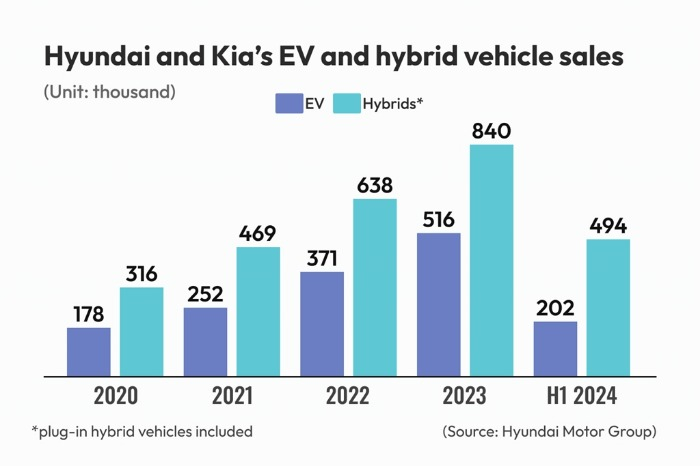
LACK OF CHARGING INFRASTRUCTURE, EV FIRES
Sources said Hyundai has begun working on EREVs as it believes a relatively short driving range and lack of charging infrastructure are among the biggest barriers to rapid EV adoption.
Growing fears of EVs catching fire have also prompted Hyundai to focus on the development of EREVs before fully migrating to pure electric vehicles, they said.
ERVEs don’t necessarily require an extensive charging infrastructure. Since they are driven by electric motors, they also boast much better acceleration than internal combustion engine vehicles.
“It is still years before we see an affordable EV equipped with batteries that can travel 1,000 km on a single charge. EREVs will be competitive for at least 10 years before the arrival of the EV era,” said an industry official.
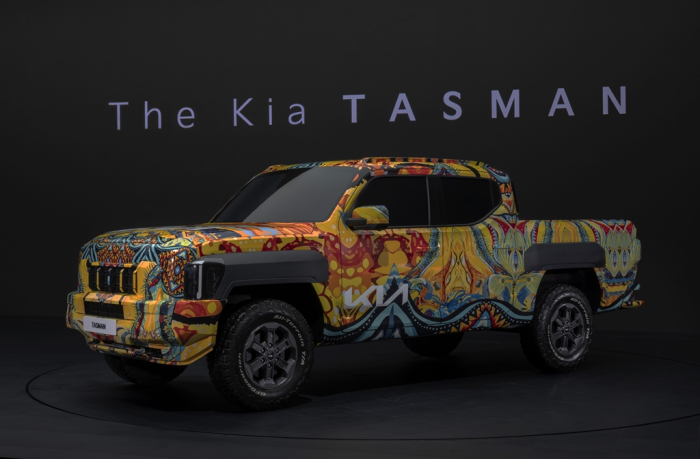
RANGE EXTENDERS FOR SANTA FE, GV70, PICKUPs
Sources said Hyundai Motor Group will likely apply its EREV system to its flagship Santa Fe SUV and the Genesis GV70 in two to three years.
The group’s next-generation pickup trucks – codenamed TE for Hyundai Motor and TV for Kia – will also be equipped with EREV drivetrains and begin rolling out of production lines in 2028 or 2029, they said.
The new pickups will have a driving range of over 530 km with a load of over 4,535 kg, sources said.
EREV pickup trucks will likely boost Hyundai's presence in the US where heavy-duty trucks are popular.
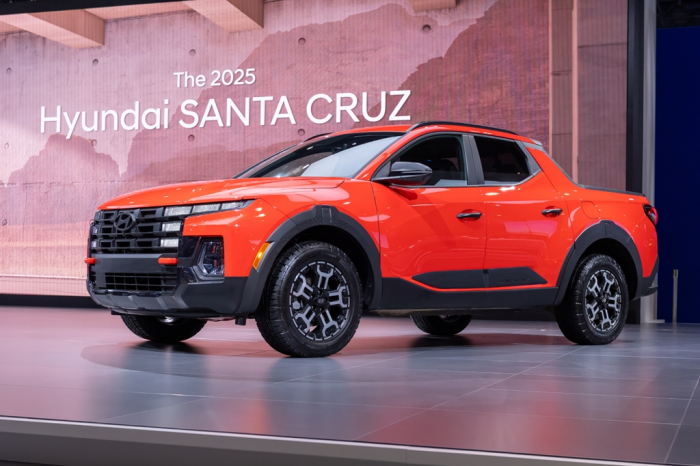
According to market research firm Marklines, pickup sales in the US market stood at 2.86 million units in 2023, nearly double large sedan sales of 1.56 million.
Hyundai Motor is currently selling the Santa Cruz pickup in the US. Last year, it sold 36,675 units of the Santa Cruz, ranking 12th in pickup truck sales there.
Kia also announced its entry into the US pickup market by unveiling the Kia Tasman at the Busan Mobility Show in May.
EV CHASM: A TIME OF SUFFERING
Analysts said Hyundai and Kia plan to overcome the current stagnation in EV demand, dubbed the EV chasm by selling more hybrid models and launching vehicles with an EREV drivetrain.
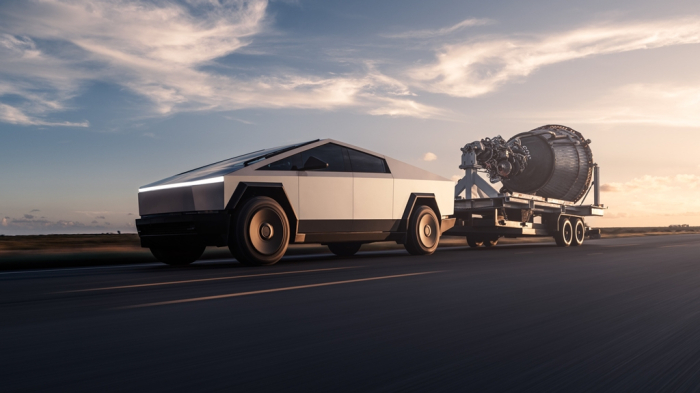
“Global automakers will enter a period of suffering for at least two to three years starting in the second half of this year,” said a senior Hyundai Motor official. “Hybrids and EREVs are our weapons to fight this battle.”
With Hyundai Motor and Kia’s combined hybrid vehicle sales of 408,799 units in the first half – the first time to rise above the 400,000 mark, Hyundai plans to produce both EVs and hybrids at its dedicated US EV lines to be built by October at the Hyundai Motor Group Metaplant America (HMGMA) in Georgia.
With its new electric pickups, Hyundai aims to compete with the three best-selling models in the US – the Ford F-Series, Chevrolet's Silverado and the Ram pickup – as well as Tesla Inc.’s Cybertruck.
The EREV system was first applied to General Motors Co.’s Chevrolet Volt in 2010.
The system was soon sidelined but has begun to gain popularity in recent years with Chinese and Japanese automakers such as Li Auto Inc., Xiaomi Inc., Nio Inc., and Nissan Motor Corp. unveiling EREVs boasting some 1,000 km in range.
Last year, Li Auto sold 380,000 EREVs in China, led by the L7 with a mileage of up to 1,050 km.
Write to Jin-Won Kim and Jae-Fu Kim at jin1@hankyung.com
In-Soo Nam edited this article.
More to Read
-
 Electric vehiclesMercedes, BMW, Audi, VW offer deep discounts amid EV phobia in Korea
Electric vehiclesMercedes, BMW, Audi, VW offer deep discounts amid EV phobia in KoreaAug 12, 2024 (Gmt+09:00)
3 Min read -
 Electric vehiclesHalf of EV imports in Korea run on Chinese batteries as EV fires rise
Electric vehiclesHalf of EV imports in Korea run on Chinese batteries as EV fires riseAug 09, 2024 (Gmt+09:00)
4 Min read -
 AutomobilesHyundai Tucson HEV posts record US sales as hybrids catch on
AutomobilesHyundai Tucson HEV posts record US sales as hybrids catch onAug 02, 2024 (Gmt+09:00)
2 Min read -

-
 AutomobilesHyundai considers EV version of Santa Cruz pickup in US market
AutomobilesHyundai considers EV version of Santa Cruz pickup in US marketSep 21, 2021 (Gmt+09:00)
2 Min read -
 AutomobilesHyundai Santa Cruz to challenge Ford Maverick in US pickup market
AutomobilesHyundai Santa Cruz to challenge Ford Maverick in US pickup marketJun 21, 2021 (Gmt+09:00)
2 Min read
Comment 0
LOG IN


